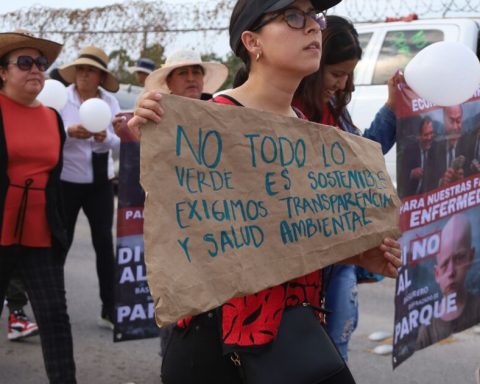From August 12 The calendar for presenting the income tax return before the National Tax and Customs Directorate (DIAN).
It is worth mentioning that each taxpayer can consult the day on which he must declare with the last two digits of his Tax Identification Number (NIT)which usually also corresponds to the citizenship card.
(Further: Petro’s financing law: what it needs to be efficient and ideas to improve it).
If this year you must carry out this process before the country’s customs and tax entity, it is recommended that you prepare a folder with several key documents, such as your Updated Single Tax Registry (RUT), the certificate of income and labor withholdings as well as those that demonstrate your assets or investments, if you have them, among other files.
Income tax return
Diego Caucayo / Portfolio
Changes in the declaration
For this 2024, the changes brought by the tax return will be reflected in the income tax returns. most recent tax reformthat is, the one approved at the end of 2022, months after Gustavo Petro assumed the Presidency, and which came into force in 2023.
(You may be interested in: The tax miracle that Colombia needs to avoid new budget cuts).
Perhaps the most important novelty is the adjustment that the Exempt income caps and deductionsthat is, people will not be able to deduct for having housing loans, prepaid medicine, making contributions to savings accounts for the promotion of construction (AFC) or having dependents in their care, among others.
While previously it was possible to deduct up to 5,040 tax value units (UVT), which currently represents 237.2 million pesos, now it will only be possible to do so up to 1,340 UVT, or about 63 million pesos.

Income tax return
iStock
“This means that contributions made to AFC, interest on mortgage loans, payments to prepaid medicine and the 25 percent exempt income are limited to a total maximum of 63 million annually, which represents a significant restriction that will increase tax payments in the declarations.“, he claimed Nicole Ríos, associate director of Tax and Customs Law & Foreign Trade at CMS Rodríguez-Azueroquoted by EL TIEMPO
Adjustments to deductions for dependents
The latest tax reform brings with it other changes, such as the possibility that people will be able to credit up to two deductions for economic dependents in their declaration, as long as they receive income from work.
(Can read: Warning of a billion-dollar hole in the General National Budget for 2025).
The first deduction corresponds to the one that exists in previous years, that is, 10% of gross income up to 32 UVT per month (around 1.5 million pesos).
And the new deduction, as he says Andrés Bermúdez, Tax Law Director of the Godoy Córdoba firmcited by EL TIEMPO, does not affect withholding tax and allows for 72 UVT (about 3.3 million pesos) per dependent, with a maximum of up to four.

Income tax return
PHOTO: iStock
Although the Dian initially maintained that the taxpayer could not benefit from both deductions for the same individual dependent, the expert assured that, finally, it would be possible to do so.
(Further: Project seeks drastic sanctions for those who sell products alluding to Pablo Escobar).
“When a person has income from both an employment relationship and a legal or regulatory one, he or she is allowed to apply both deductions for the same dependent. In other words, he or she can access both benefits simultaneously for a single economic dependent.“, he explained.
What is considered a dependent?
1. The taxpayer’s children who are up to 18 years of age.
2. The taxpayer’s children between 18 and 23 years of age, when the father or mother is financing their education.
3. Children of the taxpayer over 18 years of age who are in a dependent situation, originating from physical or psychological factors that are certified by Legal Medicine.
4. The spouse or permanent partner of the taxpayer who is dependent, either due to lack of income or due to income being less than 260 UVT.
5. Parents and siblings of the taxpayer who are dependent, either due to lack of income or income less than 260 UVT, or due to dependency caused by physical or psychological factors.
BRIEFCASE
*With information from EL TIEMPO – ECONOMY

















